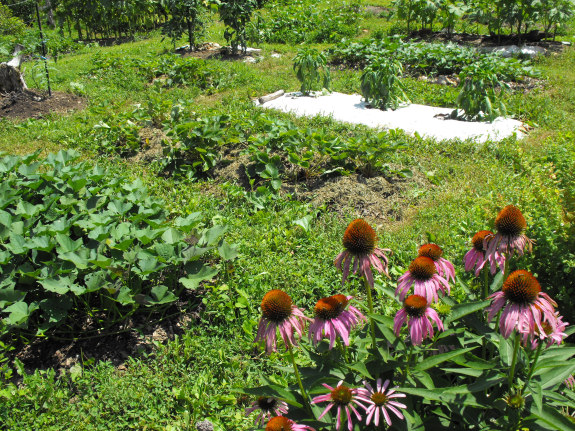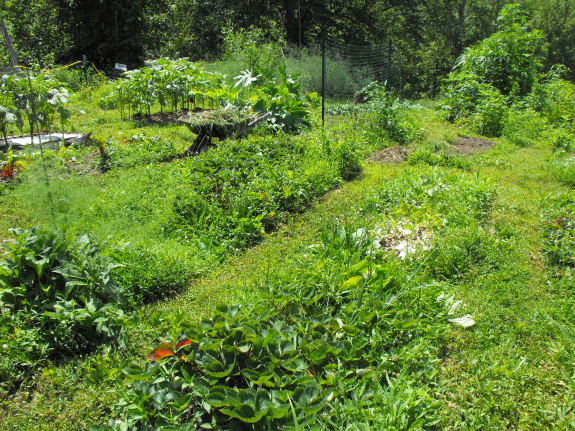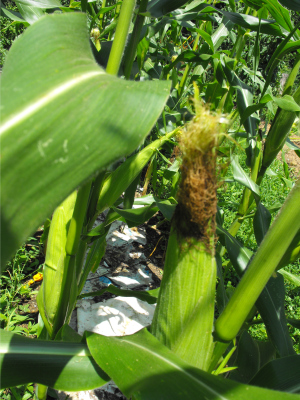
Summer weeds

I like to pretend that
our garden looks like the image above --- well-weeded beds separated by
carefully mown aisles. But at this time
of year, a lot of it actually looks like this picture:

Yes, our garden is full
of weeds. We're slowly developing a mulching technique, but this year is
a bit of an experimental year, so we haven't mulched nearly as much as
I would have liked. Instead, I weed the garden constantly,
rotating through so that each area is weeded at least once a month.
Or at least that's the
plan, which I manage to achieve in the spring. By the height of
summer, though, my rotation extends out to nearly two months, which is
how long it's been since the portion of the garden in the second photo
was weeded. Luckily, our vegetables have grown tall in that span
of time, so they don't seem to have been stunted by their weedy
neighbors.

I've been reading Corn
Among the Indians of the Upper Missouri (which may become a
lunchtime series if I ever get my act together), and at first I was
stunned by the traditional cultivation method the Native Americans
employed --- plant and weed like mad until the entire garden has been
weeded twice. Then go off to hunt buffalo for the rest of the
summer, returning just in time to harvest your corn, beans, squash, and
sunflowers. But the truth is that if you weed carefully when your
vegetables are in the seedling stage, most veggies can quickly outstrip
the weeds and form a leaf canopy that excludes competitors. Sure,
we might get a slightly higher yield if I weeded more obsessively, but
there are only so many hours in the day.
The primary point of
this post is --- don't feel bad if your garden is weedy! We've
passed the point of no return (July 4), so the worst that weeds can do
to your garden now is seed a new crop of weeds for next year. If
you do your best to pull the weeds out before they fruit, I think it's
quite all right to focus on the harvest.
Want more in-depth information? Browse through our books.
Or explore more posts by date or by subject.
About us: Anna Hess and Mark Hamilton spent over a decade living self-sufficiently in the mountains of Virginia before moving north to start over from scratch in the foothills of Ohio. They've experimented with permaculture, no-till gardening, trailersteading, home-based microbusinesses and much more, writing about their adventures in both blogs and books.
Want to be notified when new comments are posted on this page? Click on the RSS button after you add a comment to subscribe to the comment feed, or simply check the box beside "email replies to me" while writing your comment.
